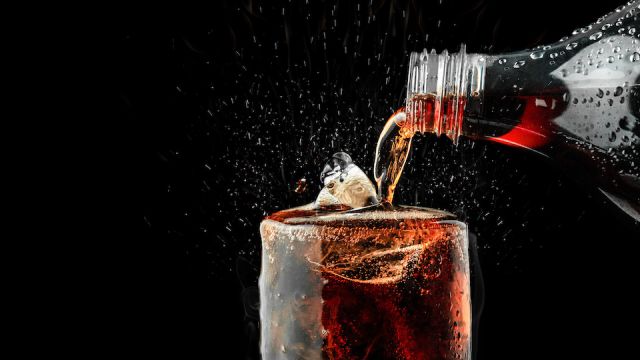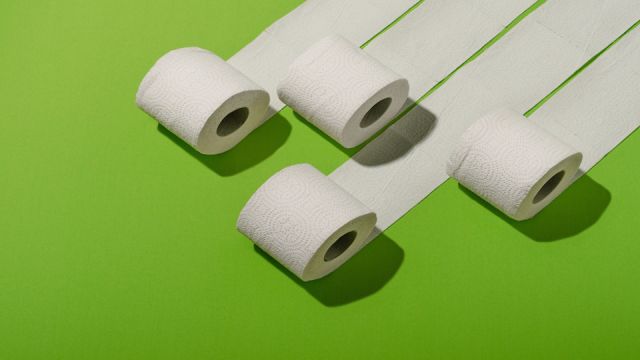Start talking about microwave safety amongst mixed company and you are sure to spark up a “heated” debate. Some might warn you that even getting within two feet of a running microwave will harm you, while others will tell you that the issues are not so much with the microwave itself but rather with the nature of the food being microwaved, as well as its packaging.
The latest statistics tell us that over 90 percent of Americans eat microwave meals. In fact, because they are so convenient and cost effective, few households and eating establishments are without one.
Discovered by accident
No one actually set out to construct the microwave to cook food. Its food cooking ability was discovered quite by accident. During World War ll, microwaves were used in our spy efforts, and it was later discovered that these radar waves actually melted candy bars.Soon it was found that microwave heating was twice as fast as oven heating, and the first commercial microwave was marketed in 1954. The domestic oven, marketed as a “radar range,” became popular by 1967, and has now become a common fixture in homes across America. It is also used extensively in our restaurant and fast food industry.
Just how do they work?
Microwaves are a type of electromagnetic energy, similar to light waves or radio waves. They are very short waves of electromagnetic energy that travel fast. In fact, they travel at the speed of light – 186,282 miles per second.
The same microwaves that are used to cook food are also used to send long distance telephone signals, computer information and television programs all over the earth, or up to a satellite in space.
Food molecules become hot when they are moved by the waves. When a wave enters food, it heats the food from the outside in.
The very sad truth of the standard American diet
Our ancestors cooked their freshly-caught meat and fish over open fire, roasting it to perfection and enjoying it. They gathered herbs, berries, nuts and other wild edibles and ate them fresh, no processing, no additives and no packaging. Today, over 90 percent of what Americans spend on food is spent on processed items – this paints a very grim picture indeed.
The majority of commercially prepared frozen and boxed meals are processed, and often cooked in a microwave for convenience. No more sweating around a hot stove, simply pull a meal from the freezer and pop it in the microwave. In a few short minutes, dinner is ready.
However convenient it may be, hyper-processed food may sustain your life, but it is void of the real nutrition that the body needs to be strong and vital. Many frozen and processed meals contain high amounts of sodium, trans fats and sugar. From coughs and colds to degenerative diseases, without proper nutrition the body will not have the energy it needs to stay well.
There are two areas where most microwave debaters can find at least some common ground. These two areas are enough to warrant serious considerations of when and how you use a microwave:
Packaged microwave food may be dangerous
Popcorn is an all-time favorite microwave treat. However, many microwave popcorn bags are heavily treated with a chemical coating (fluorotelomer), best known as Teflon. This coating contains mixtures of long-chain chemicals that can be metabolized to perfluorooctanoic acid (PFOA), a likely carcinogen.
These bags are dangerous because a large amount of the coating is used, and the popcorn is heated to extreme temperatures, which increases the risk of the fluorotelomers entering the food.
The January/February 1990 issue of the Nutrition Action Newsletter reported that a number of toxic chemicals from packaging of common foods cooked in the microwave, such as popcorn and pizza, leaked when the food was cooked.
Most plastics, including film food wrap and styrofoam containers, have been shown to migrate from the packaging into microwaved foods. This includes warping that displays a number 4 recycling symbol, and polystyrene displaying a number 6 recycling symbol. Scientists agree that contamination of food is possible, but disagree on the health implications of such contamination.
Researchers who study “invisible” changes occurring within the cells, including metabolic patterns, find reason for concern over the use of plastic in microwave ovens. The same concern does not exist with the use of glass, Pyrex or ceramics.
In my family, we have always preferred to use our stovetop or countertop toaster oven for cooking and reheating. If you choose to use a microwave, the most important piece of health advice to remember is that you should NEVER EVER put food in plastic containers in the microwave oven. There are toxic chemicals embedded in plastic food containers (like phthalates, Bisphenol-A, and others) which will leach from the container right into the food you are about to eat. Not so yummy…” – Joshua Levitt, ND (Alternative Daily Expert)
Microwaves cook food unevenly
According to Consumer Reports, microwaving frozen or refrigerated convenience food can make you sick. Over 76 million cases of foodborne illness occur each year in America – many due to the consumption of undercooked foods. When food is not cooked evenly to an internal temperature that kills harmful bacteria, the risk of illness increases greatly.
What about loss of nutrients and other concerns?
One of the biggest arguments put forth against microwaves is that they negatively impact food nutrients. First and foremost, we must remember that the nature of most microwaveable food is nutrient-void to begin with.
However, if you are cooking real food, there are some documented concerns that we would be remiss not to mention.
- A Scandinavian study done in 1999 indicates that asparagus spears cooked in the microwave had a reduction in vitamins.
- Garlic cooked in the microwave for just 60 seconds inactivates alliinase, the principle active anticancer ingredient.
- In November of 2003, a study published in the Journal of the Science of Food and Agriculture found that broccoli that had been cooked in the microwave with water lost 97 percent of its antioxidants versus steamed broccoli, which lost only 11 percent.
- A 1992 study found that microwaved breast milk lost antibodies and lysozyme activity, as well as fostered growth of potentially pathogenic bacteria.
- A short-term study found changes in the blood chemistry of individuals who consumed microwaved milk and vegetables. Hemoglobin and white blood cell counts decreased while cholesterol increased.
- Microwaving food seems to create new compounds not found in nature. These compounds are known as radiolytic byproducts. If ingested over a long period of time, it is thought that these compounds may cause problems and are potentially harmful to young children.
- Cooking foods that contain protein in a microwave for more than 10 minutes may cause the chemistry of the meat protein to change. Deformed protein molecules may have a negative impact on health.
- Several laboratories in America have found that continual exposure to low-level radiation may cause problems with the eyes, resulting in a increased risk of cataracts.
There may be dangers associated with microwaving food… there is a question as to whether microwaving alters protein chemistry in ways that might be harmful.” – Dr. Andrew Weil
What does the FDA say?The FDA currently states:
“Controlled, long-term studies involving large numbers of people have not been conducted to assess the impact of low level microwave energy on humans. Much research has been done with experimental animals, but it is difficult to translate the effects of microwaves on animals to possible effects on humans… The fact that many scientific questions about exposure to low levels of microwaves are not yet answered require the FDA to continue the enforcement of radiation protection requirements. Consumers should take certain common sense precautions.”
Common sense precautions
If you must use a microwave, it is best:
- to use it for reheating only
- not to prepare frozen or packaged meals
- not to stand directly in front of it while it is cooking
- to use only microwave-safe glass, Pyrex or ceramic
- not to operate the microwave when it is open
The Slow Food organization believes that food is a universal right, and that it should be accessible to all people. Food should be grown naturally, cooked with care, eaten mindfully, and thoroughly appreciated and enjoyed. Slow Food is about getting back in touch with the true purpose and pleasure of cooking and eating. It is about a richer, more vital relationship with our food, an attitude that existed before fast food and microwaves.
Since the long-term impacts of microwaves have not been fully uncovered, it is best to play it safe and go slow.
-The Alternative Daily
Sources:
Kidmose U and Kaack K. Acta. Agriculturae Scandinavica B1999:49(2).110-117.
Vallejo F, Tomas-Barberan F A, and Garcia-Viguera C. Phenolic compound contents in edible parts of broccoli inflorescences after domestic cooking. Journal of the Science of Food and Agriculture
Quan R (et al). Effects of microwave radiation on anti- infective factors in human milk. Pediatrics 89(4 part I). 667-669.
On Call,’ Dr. Jonathan Wright, MD, Let’s Live magazine, Mar. 1994.
Natural Health magazine, Dr. Andrew Weil, Nov./Dec. 1995
http://www.truthaboutabs.com/microwaves-are-evil.html
http://www.powerwatch.org.uk/rf/microwaves.asp
http://www.whfoods.com/genpage.php?tname=george&dbid=227
https://www.thealternativedaily.com/microwaves-threat-health/?utm_source=internal&utm_medium=email&utm_campaign=AD190926















